Are You Making These 3 Common Grand Canyon Field Trip Mistakes? (Appleseed Expeditions Shows You How to Fix Them)
- Caleb Mullenix
- 17 hours ago
- 5 min read
Planning a Grand Canyon field trip represents one of the most impactful educational experiences you can provide your students. However, ensuring the safety of students while maximizing learning opportunities requires careful preparation and meticulous attention to detail. After facilitating hundreds of Grand Canyon educational expeditions, Appleseed Expeditions has identified three critical mistakes that educators consistently make when planning these transformative journeys.
Understanding these common pitfalls: and implementing proven solutions: will transform your Grand Canyon experience from a potentially stressful endeavor into an enriching educational adventure that students will remember for years to come.
Mistake #1: Inadequate Physical Preparation and Risk Assessment
The most dangerous mistake educators make involves underestimating the physical demands and environmental challenges of Grand Canyon exploration. Many teachers approach the canyon with the same preparation mindset used for typical school outings, failing to recognize that the Grand Canyon presents unique physiological and safety challenges that require specialized planning.
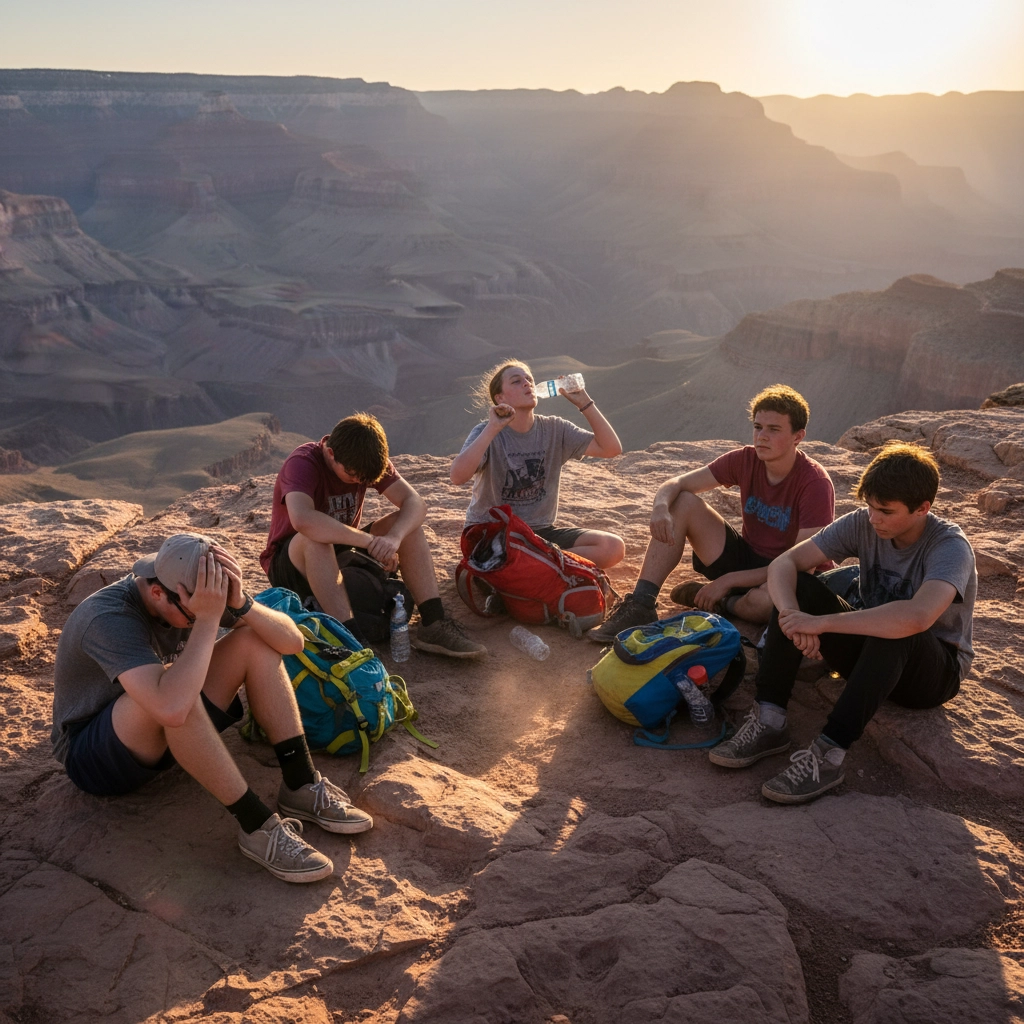
The Hidden Dangers of Inadequate Preparation
The Grand Canyon's elevation ranges from 2,400 feet at the Colorado River to over 7,000 feet at the South Rim. This dramatic elevation change creates significant challenges for student groups, particularly those traveling from lower altitudes. Dehydration occurs rapidly in the canyon's arid environment, while temperature variations can exceed 40 degrees between rim and river levels.
Most concerning is the phenomenon known as "down is optional, up is mandatory." Students often feel energetic hiking down into the canyon but become exhausted, dehydrated, or injured on the return journey upward. Emergency evacuations from the canyon cost thousands of dollars and create dangerous situations for students.
Comprehensive Solutions for Physical Preparation
Begin by conducting thorough physical assessments of all participating students at least six weeks before departure. Require medical clearances for students with any pre-existing conditions, particularly respiratory or cardiovascular concerns. Create detailed fitness preparation programs that include cardiovascular conditioning, hiking practice with loaded backpacks, and altitude acclimatization exercises.
Establish clear physical requirements for different canyon activities. For rim-only experiences, ensure students can comfortably walk 2-3 miles on uneven terrain. For any below-rim hiking, require students to demonstrate they can hike 4-6 miles with elevation changes while carrying water and supplies.
Develop comprehensive risk management protocols that address heat-related illnesses, altitude sickness, dehydration, and hiking injuries. Train all chaperones in recognizing early signs of these conditions and implementing immediate response procedures. Create detailed emergency action plans that include evacuation procedures, communication protocols, and medical response systems.
Mistake #2: Poor Timing and Itinerary Planning
The second critical mistake involves inadequate consideration of seasonal conditions, daily schedules, and educational pacing. Many educators select Grand Canyon dates based on school calendar convenience rather than optimal learning conditions, resulting in compromised safety and diminished educational value.
Understanding Seasonal and Daily Challenges
Summer months present extreme heat dangers, with canyon temperatures exceeding 100°F and creating life-threatening conditions for student groups. Winter brings snow, ice, and limited access to many educational sites. Spring and fall offer optimal conditions but require advance booking due to high demand from educational groups.
Daily timing mistakes include starting activities too late in the day, underestimating travel times between educational sites, and failing to account for student fatigue patterns. Many groups rush through experiences or miss key learning opportunities due to poor schedule management.
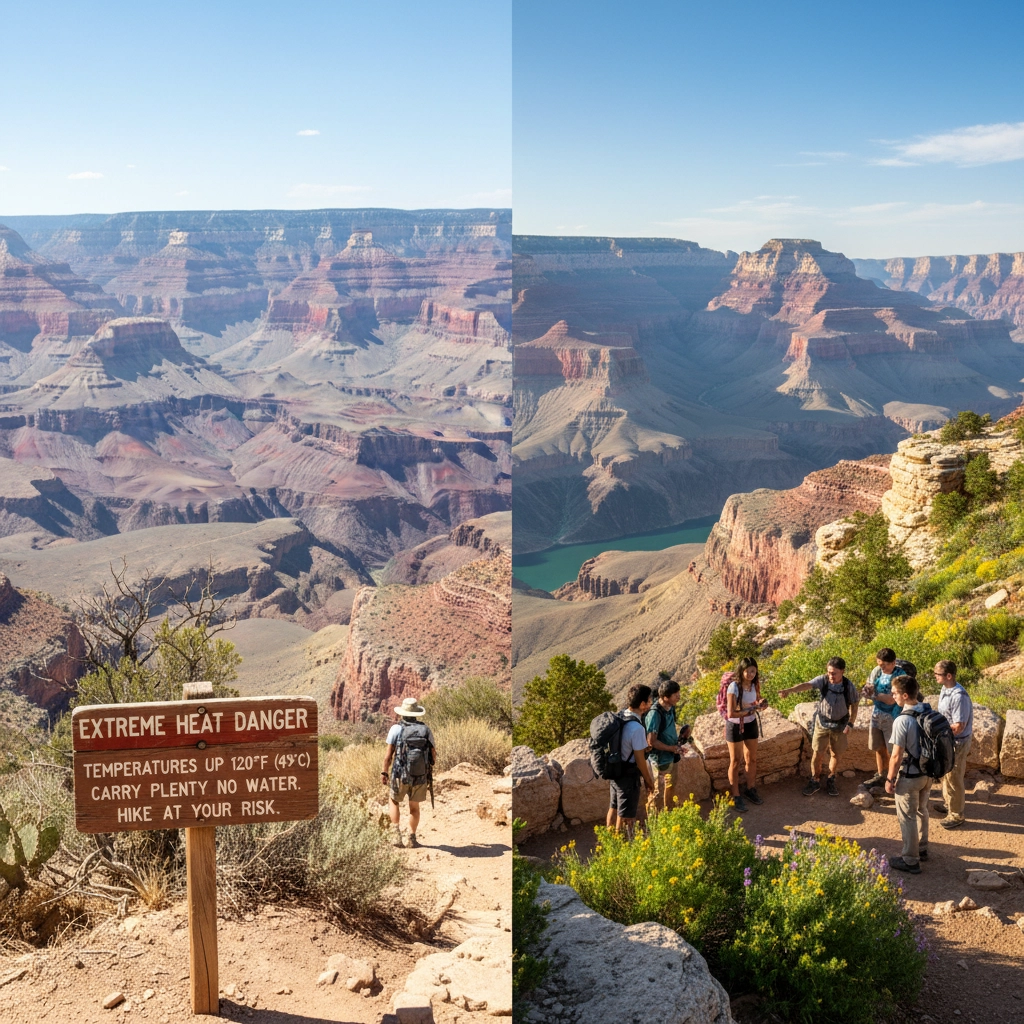
Strategic Timing and Itinerary Solutions
Schedule Grand Canyon educational trips during optimal seasons: late September through early November and March through early May. These periods offer moderate temperatures, clear visibility, and comfortable conditions for extended outdoor learning activities. Book accommodations and educational programs at least 12 months in advance to secure preferred dates.
Create detailed daily schedules that prioritize high-impact educational experiences during peak student energy periods: typically mid-morning and early afternoon. Begin each day with sunrise observations and geological discussions, utilize midday periods for indoor educational programs or rest, and schedule sunset experiences for reflection and consolidation of learning.
Implement buffer time throughout your itinerary to accommodate unexpected delays, extended student discussions, or weather-related adjustments. Plan rest periods between activities to prevent student fatigue and maintain engagement levels. Develop alternative indoor activities for inclement weather conditions.
Structure your itinerary to progress from basic concepts to complex understanding. Begin with geological overview presentations, advance to hands-on rock identification activities, and culminate with synthesis discussions about Earth's history and environmental stewardship.
Mistake #3: Missing Educational Opportunities Through Surface-Level Experiences
The most educationally devastating mistake involves treating the Grand Canyon as a scenic backdrop rather than an immersive learning laboratory. Many school groups focus primarily on photography and brief overlook visits, missing profound opportunities for hands-on scientific investigation, cultural understanding, and environmental stewardship education.
The Cost of Superficial Experiences
Surface-level canyon visits fail to engage students in meaningful learning and miss opportunities to connect geological concepts with broader scientific principles. Students return home with photos but lack deep understanding of geological processes, ecosystem relationships, or cultural significance. These missed opportunities represent wasted educational investments and fail to inspire students toward scientific careers or environmental stewardship.
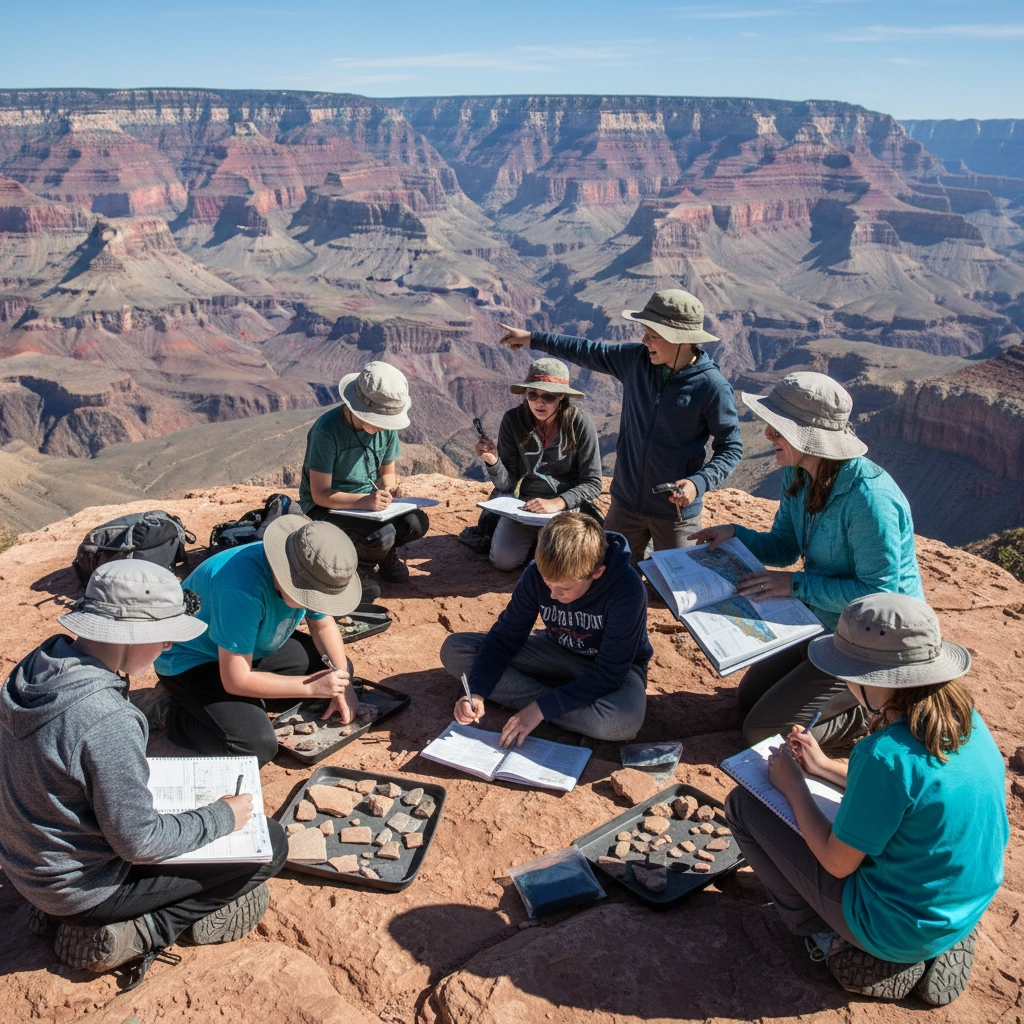
Transforming Visits into Deep Learning Experiences
Design comprehensive pre-trip educational units that introduce geological concepts, canyon formation theories, and ecosystem relationships. Provide students with background knowledge about plate tectonics, erosion processes, and geological time scales. Create anticipatory questions that guide observation and investigation during canyon visits.
Implement hands-on investigation activities throughout your canyon experience. Organize rock identification stations where students examine actual canyon rock samples and connect observations to geological history. Establish measurement activities that help students understand scale, time, and geological processes. Create data collection projects that engage students in authentic scientific inquiry.
Incorporate cultural education that respects and highlights Indigenous perspectives on canyon history and significance. Partner with tribal educators or cultural centers to provide authentic cultural learning experiences. Discuss the importance of land stewardship and conservation ethics throughout your visit.
Develop reflection and synthesis activities that help students consolidate learning and make connections between canyon experiences and broader scientific concepts. Create opportunities for students to share discoveries, discuss observations, and develop deeper understanding through peer interaction.
Implementation Strategies for Success
Successfully avoiding these common mistakes requires systematic implementation of proven strategies and ongoing commitment to educational excellence. Begin planning your Grand Canyon educational expedition at least 18 months in advance to ensure optimal conditions and comprehensive preparation.
Establish partnerships with experienced educational travel providers who understand the unique requirements of Grand Canyon school trips. Collaborate with organizations that prioritize safety, educational depth, and meaningful student experiences. Ensure that all trip providers maintain appropriate certifications, insurance coverage, and emergency response capabilities.
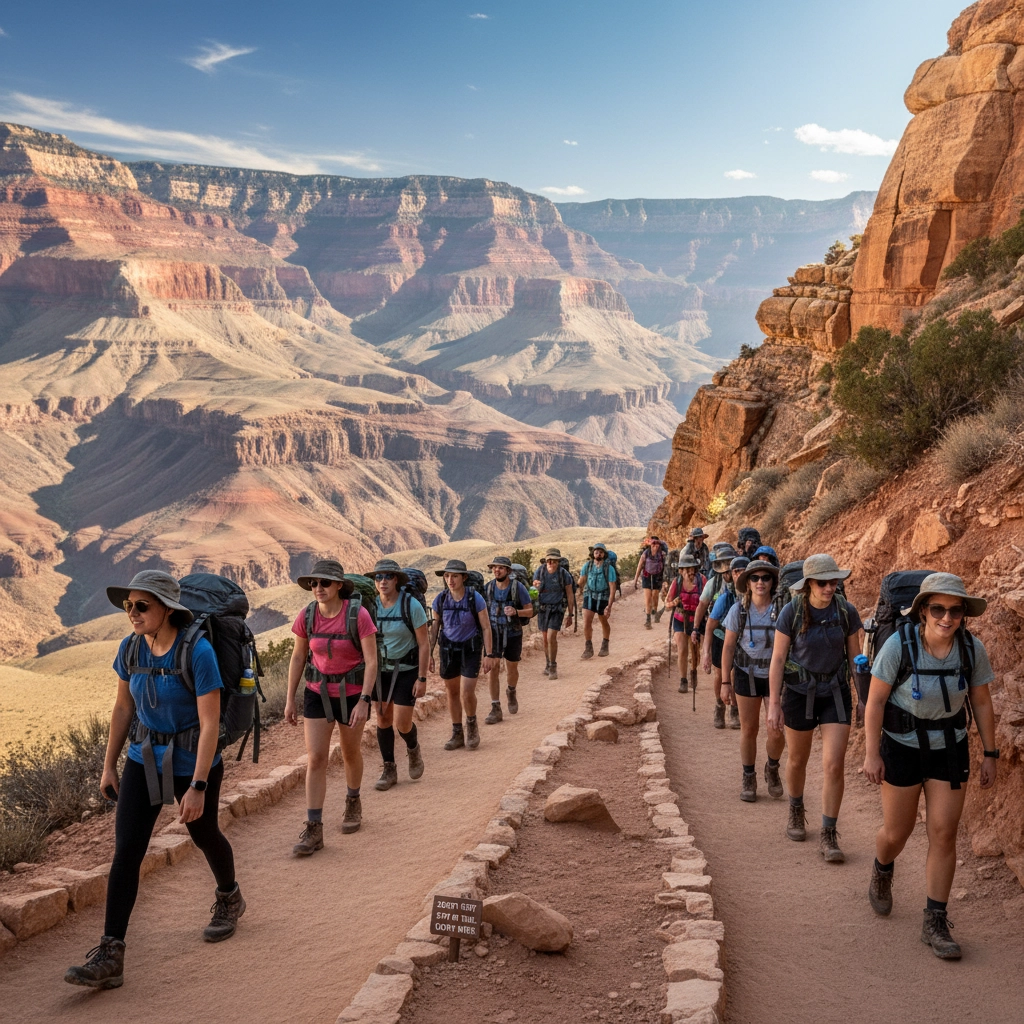
Create comprehensive communication systems that keep administrators, parents, and students informed throughout the planning process. Share detailed itineraries, safety protocols, and educational objectives with all stakeholders. Provide regular updates about preparation requirements, expectations, and trip logistics.
Develop assessment strategies that measure student learning outcomes and trip effectiveness. Design pre- and post-trip evaluations that assess student knowledge, attitudes, and interests related to geological sciences, environmental stewardship, and career aspirations. Use assessment data to refine future trip planning and demonstrate educational value to administrators and parents.
Building Long-Term Educational Impact
Transform your Grand Canyon experience into lasting educational impact by connecting canyon learning to ongoing classroom instruction and future educational opportunities. Develop follow-up projects that allow students to continue investigating geological concepts, environmental issues, or career pathways inspired by canyon experiences.
Create presentation opportunities where students can share canyon discoveries with younger students, parents, or community members. Design service learning projects that connect canyon conservation with local environmental stewardship activities. Encourage students to pursue advanced coursework or career exploration related to geological sciences, environmental studies, or outdoor education.
The Grand Canyon offers unparalleled opportunities for transformative educational experiences when approached with proper preparation, strategic planning, and commitment to deep learning. By avoiding these three common mistakes and implementing proven solutions, you will create canyon experiences that inspire students, enhance learning, and demonstrate the power of experiential education.
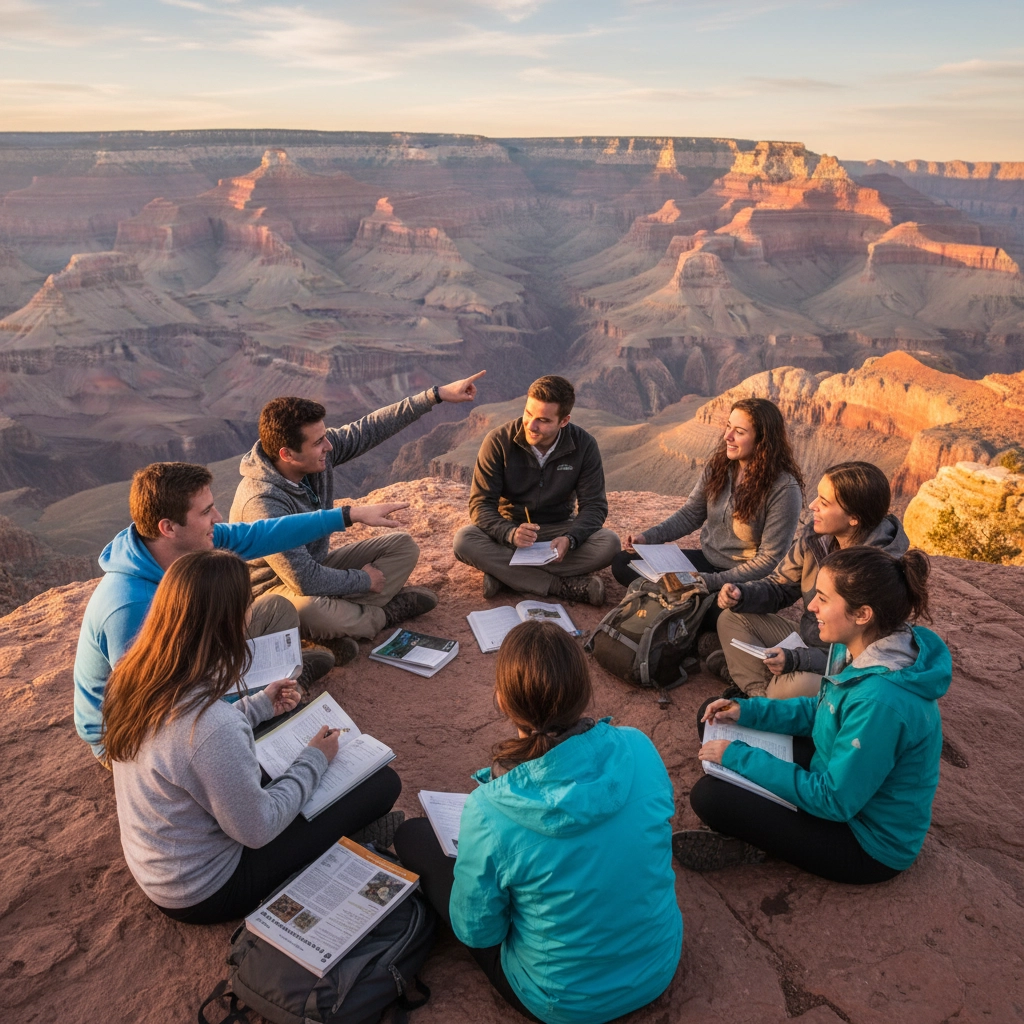
Ensuring the safety of students while maximizing educational opportunities requires partnership with experienced professionals who understand both the challenges and tremendous potential of Grand Canyon education. Through careful preparation, strategic planning, and commitment to excellence, your Grand Canyon field trip will become a defining educational experience that students carry with them throughout their academic and professional lives.



Comments